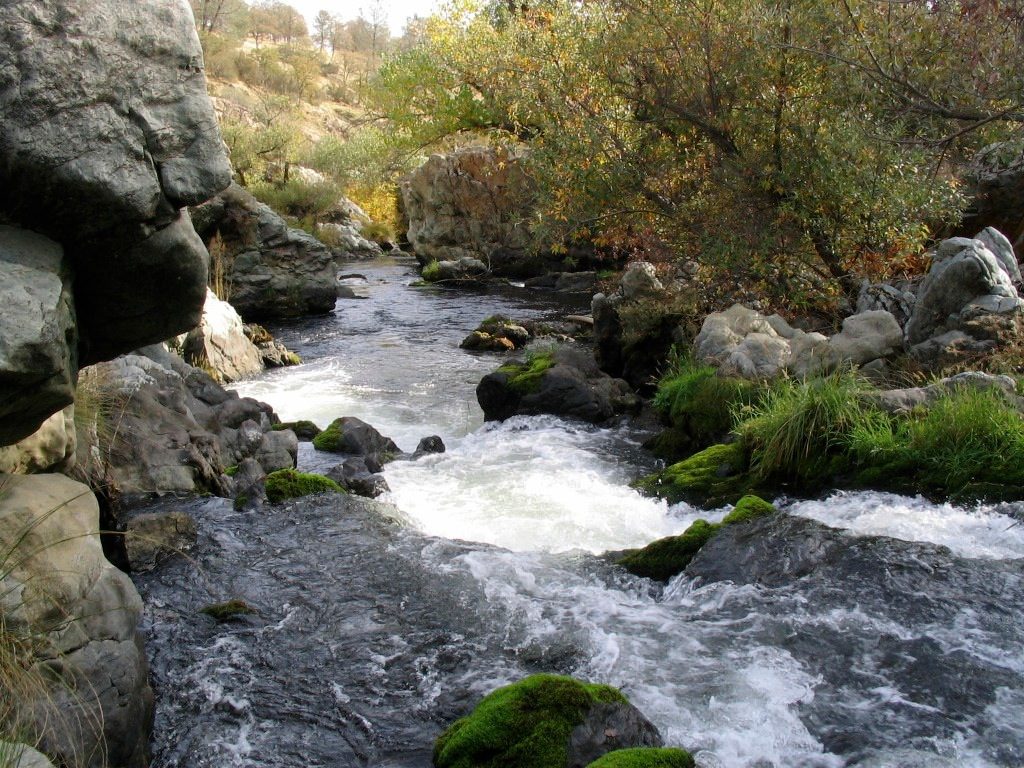Monday September 14, 2020

The Calaveras River is a unique tributary of the San Joaquin River in California’s Central Valley that plays important roles for both people and fish. The Calaveras is the major water supply for the city of Stockton and provides water for agricultural and residential use in San Joaquin and Calaveras counties. The river is also home to a population of resident rainbow trout, some of which may migrate to the ocean as steelhead (a life-history form considered threatened under the Endangered Species Act). Water operations on the Calaveras River are important for delivering irrigation and drinking water, but sometimes these activities can harm or otherwise negatively impact fish. Water districts need to regularly apply for permits from environmental agencies to demonstrate how they will address or minimize harms to fish as part of their operations. To facilitate fish conservation while maintaining reliable access to water for human consumption, the Stockton East Water District collaborated with NOAA Fisheries to develop a newly finalized Calaveras River Habitat Conservation Plan (HCP). This win-win plan ensures a commitment to conservation activities for fish as well as permitting security for water operations on the Calaveras River for a period of 50 years.
An HCP establishes a partnership between private entities and federal agencies to conserve ecosystems important for species listed under the Endangered Species Act – in this case, Central Valley steelhead. The Calaveras HCP describes the anticipated effects of water operations and provides best management practices to minimize or mitigate their impacts. The plan’s biological goals are to maintain a viable rainbow trout and steelhead population below New Hogan Dam on the Calaveras River, while also ensuring adequate habitat for Chinook salmon that may opportunistically use the river. A new video provides an overview of the key conservation actions outlined in the plan, including improving barriers to fish passage, screening diversions to reduce fish entrainment, maintaining flow in important fish habitat, and maintaining water quality for the fish population.
Historically, the Calaveras was a river of extremes, flooding in the winter and drying up in summer, with some sections going completely dry and creating disconnected pools. The original Hogan Dam was first built on the river in 1930 in an effort to reign in the dynamic flooding of the Calaveras and protect the City of Stockton, followed by New Hogan Dam, which was completed in 1963 to expand storage capacity of the reservoir from 75,062 to 317,000 acre-feet. The impoundment of New Hogan altered the river’s historical flow patterns and provides a more consistent year-round flow of water downstream. This has allowed fish like rainbow trout to persist in the river where they were once found only sporadically. Today, the Calaveras River is home to a small but important rainbow trout and steelhead population, which makes the area a popular recreational fishing destination. In contrast to its highly modified downstream reaches flowing through Stockton, the upstream reaches of the river cut through steep, scenic mountainsides below New Hogan Dam, offering prime habitat for trout. Chinook salmon also opportunistically migrate into the Calaveras to spawn during high rainfall years when there is enough flow in the river for salmon to access the habitat.
The final HCP is the culmination of 13 years of effort. During its development, Stockton East Water District funded fisheries research and monitoring on the Calaveras River since 2001 to better understand how water operations may affect at-risk salmonid populations and influence their life-history pathways. The plan lays the groundwork for adaptive management to support future studies of the fish community below the dam. Beyond research and monitoring, the plan includes several management activities related to flow, fish passage, and water quality to further support fish conservation over the term of a 50-year permit for water operations. The plan also establishes the Stockton East Water District as a watershed coordinator, who will inform stakeholders about the current state of the river. In future Fish Reports, we will dive into the conservation activities outline in the new Habitat Conservation Plan and explore the role it plays in preserving this important watershed.
This post featured in our weekly e-newsletter, the Fish Report. You can subscribe to the Fish Report here.
